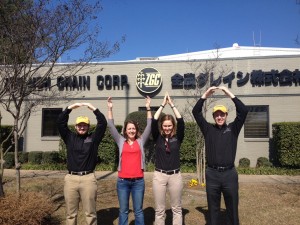By: Gary Klopfenstein, Sustainable Plant Systems (Agronomy) | Haviland, OH
During my Spring break this year I went on an enrichment trip to California to learn more about California’s agricultural industry and issues the state faces. Traveling with my fellow college ambassadors and two advisors the 16 of us was able to see and learn about the strengths and weaknesses of California’s agriculture industry.
During our eight day stay in California, there was one particular tour we went on that really stuck with me. Terranova Ranch, it was a farming operation that farmed over 7,000 acres and produced more than 40 different crops. When Don Cameron the General Manager introduced himself and shared that statistic I was astonished by the complexity of the operation. There are large farmers in Ohio but I have never visited one that grew more than ten different crops at that size. Terranova Ranch grew a wide range of crops from olives, wine grapes, almonds, tomatoes, walnuts, pistachios, to alfalfa. Some were conventional grown but there was also a fare share of acres set aside for organic crops.
Mr. Cameron gave us a tour of his operation and of course we ask him about the water issues. He explained to us about a project he is involved in, and how this project will be able to trap rainwater from the nearby river. His farming operation alone has 52 wells that supply water for his crops. The best way they manage the water is through drip irrigation lines that are 4-6 inches below the soil surface. These lines have increased yield and lowered the amount of water used per acre. Visiting the Terranova Ranch and speaking with Mr. Cameron was fascinating to hear how he is working to conserve water and still produce a quality crop for consumers.
Visiting and touring California was an amazing experience and I love talking to classmates, friends and family about my experience and the knowledge I gain from my trip. After visiting Terranova Ranch and seeing the complexity of managing 40 different crops, and the different management practices between conventional and organic crops. I gained a new appreciation for where my food comes from.
Thank you to the College of Food, Agricultural, and Environmental Sciences at The Ohio State University for making this trip possible.

